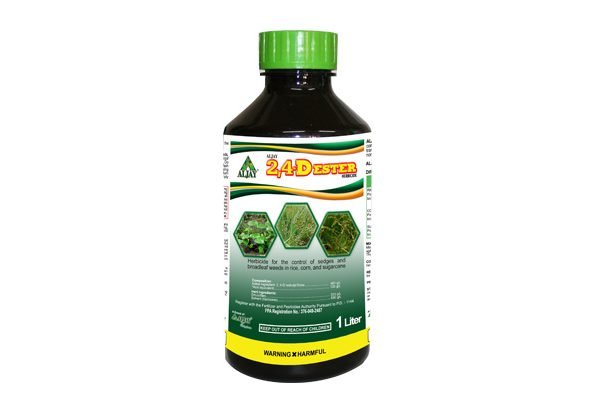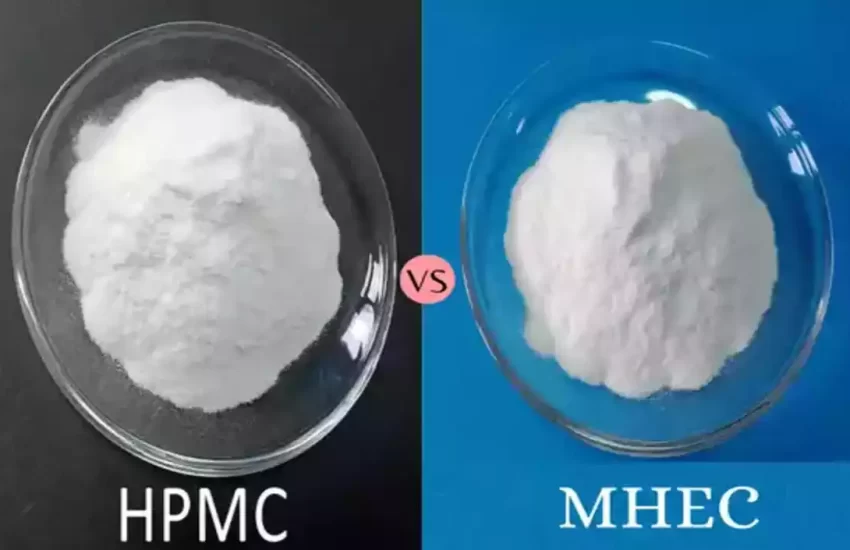What Is The Difference Between 2 4-D Amine and Ester
2 4-D Amine and Ester share a common goal of tackling troublesome weeds The use of herbicides with 2,4-D is essential to modern cultivation and weed management. They are available in two basic formulations: 2,4D amine and 2,4-D ester.
Each has distinctive chemical characteristics and features. Knowing the distinctions between these two formulations is essential to ensure safe and effective herbicide use.
This outline of content explains the distinctions between 2,4-D amine and 2,4-D ester. It covers their chemical makeup, modes of operation, formula impacts on the environment, selectiveness resistance management, toxicity cost, and availability.
By examining these factors the content will provide a complete knowledge of these herbicides helping farmers and professionals in making educated decisions about methods to control weeds.
What is 2 4-D Amine?
2,4-D amine, or 2,4-dichlorophenoxyacetic acid amine, is a synthetic herbicide widely used in agriculture to control broadleaf weeds in various crops. It belongs to the phenoxy herbicide class and is well-known for its selective killing properties against weeds.

2,4-Damine functions by imitating the plant hormone, auxin that causes an uncontrolled growth and eventually destruction of weeds that are susceptible to it. One of the main characteristics of 2,4-D is that it is formulated as a liquid concentrate, which allows it to be mixed and used within the fields.
It’s relatively less volatile than other formulations, thus reducing the chance of drift and harm to plants that are not targeted. It is therefore suitable for all types of cultivation systems, including grasses cereals, as well as some varieties of turf.
It is imperative that users adhere to safety guidelines and labeling instructions to reduce the health and environmental risks that come with the use of this product.
What is 2 4-D Ester?
2,4-D ester, or 2,4-dichlorophenoxyacetic acid ester, is another synthetic herbicide commonly used in agriculture for the control of broadleaf weeds. Like 2,4-Damine, it forms part of the phenoxy class and has with it the exact active ingredients, but is different in its chemical formula. 2,4-D ester can be formulated as an ester compound that is usually in liquid form.

This formulation has advantages in regard to absorption and penetration by plants, which makes it highly effective against a broad variety of broadleaf weeds. However, the 2,4-D ester formulation is also more volatile than the amine formulation.
Meaning it will vaporize faster and may cause drift or movement that is off-target which can cause harm to non-target plants as well as the surrounding environment. This is why cautious application and compliance with the label’s instructions are essential to reduce the risk while effectively controlling the weed population in agriculture.
Characteristics of Both Formulations
2,4-D Amine:
- Chemical Composition: 2-D-Damine is a salt of amine that is 2,4-D. It’s typically concentrated in liquid form.
- Modus for Action: This disrupts growth by mimicking the hormone of plants auxin, leading to an uncontrolled growth of susceptible broadleaf weeds.
- Formulation and Application: It’s formulated in the form of a concentrated liquid that is easy to mix and apply. It is less volatile in comparison to ester formulations, which reduces the risk of drift.
- Environmental impact: The material is less volatile, which makes the material less likely to evaporate and spread to areas that are not targeted. This lowers the risk of environmental damage that is not intended.
- Compatibility and Selectivity: It is generally compatible with a variety of crops and is able to be used in a variety of systems for cropping.
- Toxicity and Health Issues: While it still has the potential to cause harm to humans in the event of misuse it is usually deemed less harmful due to its lower risk of occurrence.
2,4-D Ester:
- Chemical Composition: The esterified form of 2,4D and is typically found as a liquid.
- Method of Action: Similar to 2,4-Damine, it mimics auxin, and disrupts the growth of plants in broadleaf weeds.
- Formulation and application: It is formulated as a liquid within an ester compound. This formulation allows for more absorption and better penetration to plants, but it is more volatile and has a higher possibility of drift.
- Environment Impact: The 2,4-D ester has a higher degree of volatility, which makes it more likely to melt and then drift away from target zones, which increases the chance of environmental harm unintentionally.
- Selection and compatibility: It’s generally compatible with a variety of crop varieties, however, its higher potential for volatility can require extra care when using it.
- Toxicology and Health Risks: The higher volatility means that 2,4-D ester can increase the risk of exposure to humans and potential health risks if it is not properly handled.
Chemical Class and Type
2,4-D Amine:
- Chemical Classification: Phenoxy herbicides
- The type: The 2,4-D amine a formula that includes the amine salt from 2,4-D. The word “amine” refers to the specific salt that is used to stabilize the 2,4-D chemical, which makes it suitable to be used in liquid concentrate formulas. 2,4-D is a synthetic herbicide containing an auxin that mimics the actions that the natural hormone, auxin, and causes an uncontrolled growth of vulnerable broadleaf weeds.
2,4-D Ester:
- Chemical Classification: Phenoxy herbicides
- The type: 2,4-D ester is an ingredient in 2,4-D that includes the esterified version of herbicide. The word “ester” refers to the particular chemical compound used to make 2,4-D in this formulation. Similar to 2,4-D amine can also be a synthesized herbicide that inhibits the growth of plants by mimicking the natural hormone. The ester formulation usually comes in liquid form and is renowned for its greater absorption and penetration capabilities however, it is also more volatile, which makes it more susceptible to floating and vaporization.
How do you Manage Herbicide Resistance?
The management of resistance to herbicides is crucial to ensure the efficacy of herbicides and ensure sustainable practices for weed control.
Here are some methods for tackling resistance to herbicides:
- Diversify methods for controlling weeds: Rotate herbicides with different methods of action and utilize a variety of non-chemical methods for control, including cultivating, covering cropping, and mulching to decrease the pressure of selection on weeds.
- Integrative Weed Management (IWM): Implement integrated weed control strategies that blend various strategies for controlling weeds, such as biological, cultural, and chemical techniques, to lessen the need for herbicides, and also to stop the development of weeds that are resistant.
- Make sure to use herbicides in a responsible manner: Apply herbicides at the prescribed rates and times and be cautious about relying too heavily on one herbicide, or herbicide class. Make use of effective techniques for application to ensure adequate coverage and reduce the chance of sub-lethal doses that may cause resistance.
- Monitor and identify resistant Weeds: Always scout fields regularly to find and confirm the existence of resistant weeds. Do diagnostic tests to identify the mechanism of resistance and modify strategies for management in line with.
- Crop rotation and tillage: Rotate the crops in order to alter the life cycle of weeds and decrease the growth of particular species of weed. Also, using tillage techniques will help control weeds and lessen the use of herbicides.
- Blends of herbicides or tank mixes: Make use of herbicide mixes or tank mixes that offer different methods of action to attack different weed species and stop the growth of populations that are resistant to the herbicide.
- Education and training: Instruct farmers, applicators, and agricultural experts on the necessity of herbicide resistance management and the best methods for preventing and controlling resistance.
- R&D: Support research efforts that focus on the development of new herbicides that have different methods of action, and also investigating new technologies and methods to ensure sustainable weed control.
Key Difference Between 2 4-D Amine and Ester
Here’s a simplified comparison chart between 2,4-D amine and 2,4-D ester formulations, focusing on key differences:
| Characteristic | 2,4-D Amine | 2,4-D Ester |
|---|---|---|
| Chemical Composition | Amine salt of 2,4-D | Esterified form of 2,4-D |
| Formulation | Liquid concentrate | Liquid in ester form |
| Mode of Action | Synthetic auxin mimic | Synthetic auxin mimic |
| Volatility | Lower | Higher |
| Drift Potential | Lower | Higher |
| Penetration & Absorption | Moderate | Better |
| Selectivity | Broad-spectrum | Broad-spectrum |
| Environmental Impact | Lower drift risk | Higher drift risk |
| Persistence in the Environment | Less persistent | More persistent |
| Compatibility with Other Herbicides | Varies | Varies |
| Application Flexibility | A wider range of conditions | Requires more caution |
| Toxicity and Health Concerns | Generally less volatile | Potentially more volatile |
| Resistance Management | Similar principles apply | Similar principles apply |
| Cost and Availability | Cost varies by product and region | Cost varies by product and region |
What are the Negative Effects of 2 4-D Amine and Ester on the Environment?
2,4-D ester herbicides and amines could cause harm to the environment when employed in a responsible manner.
Some possible environmental effects are:
- Drift and off-target damage: Both 2,4-D amine and ester formulations are vulnerable to drift if used correctly. Drift is when droplets of herbicides are carried by winds to areas that are not targeted which could harm the nearby trees, crops, and other vegetation. This could result in loss of money and destruction of ecosystems.
- Water Contamination: The runoff of fields treated with herbicides 2,4-D can transport these chemicals into water bodies including lakes, rivers, and streams. This can result in water contamination, affecting negatively the aquatic life as well as the quality of water.
- Toxicity to non-target species: 2,4-D herbicides can be toxic to non-target plant species, like sensitive broadleaf species. When herbicides spread or leach into areas containing non-target plants, they can cause harm to native plants and alter the local ecosystem.
- Impact on wildlife: Herbicides such as 2,4-D could affect wildlife indirectly by decreasing the number of food sources within the area in which it is applied. Furthermore, if herbicide residues are absorbed into the water, they could affect aquatic life.
- The development of herbicide-resistant weeds: Over time, repeated use of 2,4-D herbicides could aid in the growth of herbicide-resistant weed species. This could lead to an increase in herbicide usage and, consequently an increase in environmental impact.
- The persistence of the environment: 2,4-D ester, particularly, may have greater longevity in the environment in comparison to 2,4-D amine which can cause longer-lasting effects and the possibility of build-up in an ecosystem.
Summary
2,4-D amine as well as 2,4D ester are two commonly used herbicides that are used in agriculture to manage broadleaf herbicides. 2-D-Damine can be described as a concentrate of liquid with low volatility, which makes it suitable for different varieties of crops.
It functions by mimicking hormones in plants, which results in an interruption in the growth of weeds. However, the 2,4-D ester also contains 2,4-D as a key ingredient made as an ester compound that is liquid, which allows for plant penetration but has higher volatility that can result in damage that is off-target.
A careful application and compliance with safety guidelines is essential. Knowing these distinctions aids farmers in making informed decisions to control weeds efficiently while minimizing health and environmental risks.


